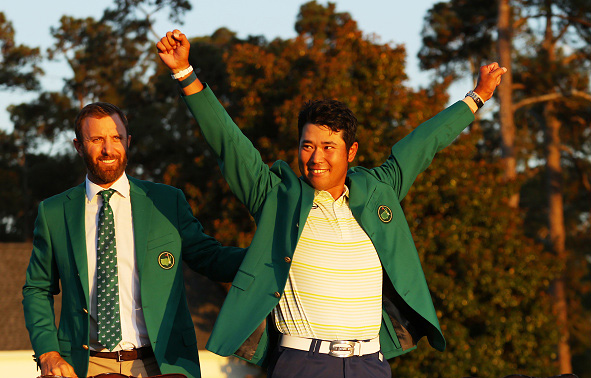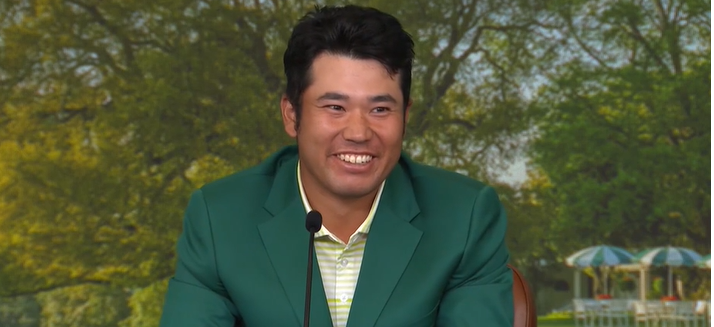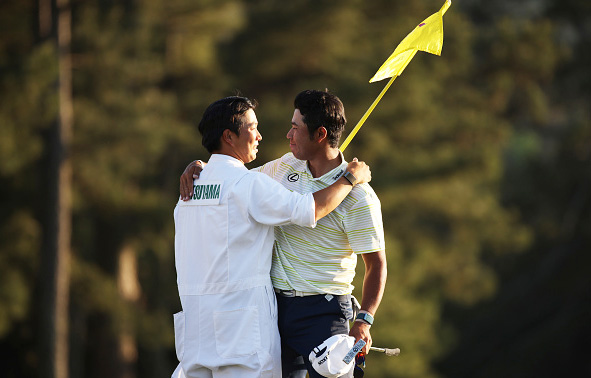
ST. AUGUSTINE, Florida – As it became apparent late Sunday afternoon that Hideki Matsuyama would become the first Japanese golfer to win a men’s major, the search for a big-picture viewpoint went into overdrive. How to put this into proper perspective?
The easy approach was to latch onto how his Masters victory might impact his golf-mad home country. No surprise, then, that Matsuyama was asked about it during his winner’s press conference.
“It’s thrilling to think that there are a lot of youngsters in Japan watching today,” he said through his interpreter. “Hopefully in 5, 10 years, when they get a little older, hopefully some of them will be competing on the world stage.”
Or, looking at it another way, will Matsuyama open the floodgates for the Japanese men much like Se Ri Pak did for women golfers in South Korea 23 years ago?

Pak, then an LPGA rookie in 1998, won two women’s majors that year. The second of those two, the U.S. Women’s Open at Blackwolf Run in Wisconsin, generally is credited with a surge in golf’s popularity among female players in South Korea, especially as a way to make a living. Development programs were established, little girls took up the sport, practiced endless hours just like Pak did, and the payoff happened astonishingly fast.
Ten years later, Pak was joined by five other Korean women golfers as major winners. And now? The Korean women are the dominant force on the LPGA Tour – of the last 46 majors played, 21 have been won by Koreans. And in the latest Rolex Rankings of women golfers, seven of the top 20 (including the top three) are from Korea.
No one, of course, anticipates Matsuyama’s win to even come close to making that kind of impact on the next generation. After all, Y.E. Yang’s rally past Tiger Woods to win the 2009 PGA Championship didn’t exactly produce a rash of South Korean men winning majors. And Mike Weir’s victory at the 2003 Masters has not been followed by another Canadian winning a men’s major, although you’ve got to like Corey Conners’ chances in the next few years.
(Connors, like many of the younger Canadian pros, were inspired by Weir. So there is some tangible evidence of its impact, even if it hasn’t manifested into more majors.)
Plus, it’s not exactly like Japan is just now discovering golf.
Depending on what data is used, it’s arguably the second biggest golfing country on the planet behind the U.S. Of the country’s population of 126 million, approximately 9.3 million are golfers; that 7.4% is close to America’s 8%.
And in its 2019 Golf Around The World study, the R&A noted that Japan has the second most courses of any country (3,169 to No. 1 USA’s 16,752). That’s ahead of Canada, England and Australia. Taking into consideration the size of the countries, Japan has one golf course for every 46 square miles; the U.S. has one course for every 227 square miles.

In other words, Japan is a mature golf market, so expecting Matsuyama’s victory to produce a huge growth spurt in the sport is simply not realistic. Unlike in 2016 when golf was hoping its participation in the Olympic Games would help grow the game in Brazil and other South American countries, this year’s Olympics tournament in Tokyo will be played in front of a mature golfing audience.
But perhaps there will be a rise of top pros at the highest of levels. Maybe the top 50 of the world rankings will include more than a single Japanese player; in fact, Matsuyama is Japan’s lone representative inside the top 80.
Still, there’s hope.
Tag Oh is from South Korea but acquired a golf teaching and management certification through a two-year full-time program in Japan. He’s currently a golf pro in Canada and told the Toronto Star this weekend that a Matsuyama win “could be a third huge boom in golf in Japan, following the first boom from the Jumbo Ozaki generation and second boom from the Shingo Katayama generation.”
A boom would be nice.
The number of golfers in Japan went through a significant decline earlier this century, although it’s been rising the last few years. Isao Aoki, who had come close to being Japan’s first major winner when he finished second to Jack Nicklaus in the 1980 U.S. Open, said that his country has made some positive strides recently.
“I wish it’s because our efforts to promote golf, but it’s probably because golf courses have been streamlined and the price is no longer as expensive,” Aoki said at a National Golf Federation Symposium two years ago. “The serious problem is the aging golf population. The biggest age group is 60. We need to get more younger people to play golf.”
That, of course, is a worldwide objective.
Certainly, the golf world understands the importance of the Japanese market. There’s a reason the Masters and the R&A were both involved in the birth of the Asia-Pacific Amateur Championship in 2009 as a gateway to their respective majors. There’s a reason the PGA Tour now has an annual event in Japan.
If Japan could produce more world-class men’s players, it could help turn the Presidents Cup into a competitive event, since the International Team (which includes qualified players from all non-European international countries) has won just once in 13 tries against the U.S.
“I hope it will affect golf in Japan in a good way,” Matsuyama said. “Not only those who are golfers already, but hopefully the youngsters who are playing golf or thinking about playing golf, I hope they will see this victory and think it’s cool and try to follow in my footsteps.
“Up until now, we haven’t had a major champion in Japan, and maybe a lot of golfers or younger golfers, too, thought, well, maybe that’s an impossibility. But with me doing it, hopefully that will set an example for them that it is possible and that, if they set their mind to it, they can do it, too.”
Of course, we won’t know the impact – if there is one — for several years. But you’d like to think that Matsuyama will set an example for young Japanese golfers that he really didn’t have as a youngster.
Asked which Japanese athletes he most admired, Matsuyama cited three Major League baseball players – Yu Darvish, Kenta Maeda and Shohei Otani, who is actually two years younger than the 29-year-old Matsuyama.
And as for golfers?
“Not so much,” Matsuyama said.
But he did add, “Hopefully now others will be inspired for what happened today and follow in my footsteps.”
Let’s hope so. Check back in 10 years.











Leave a Reply